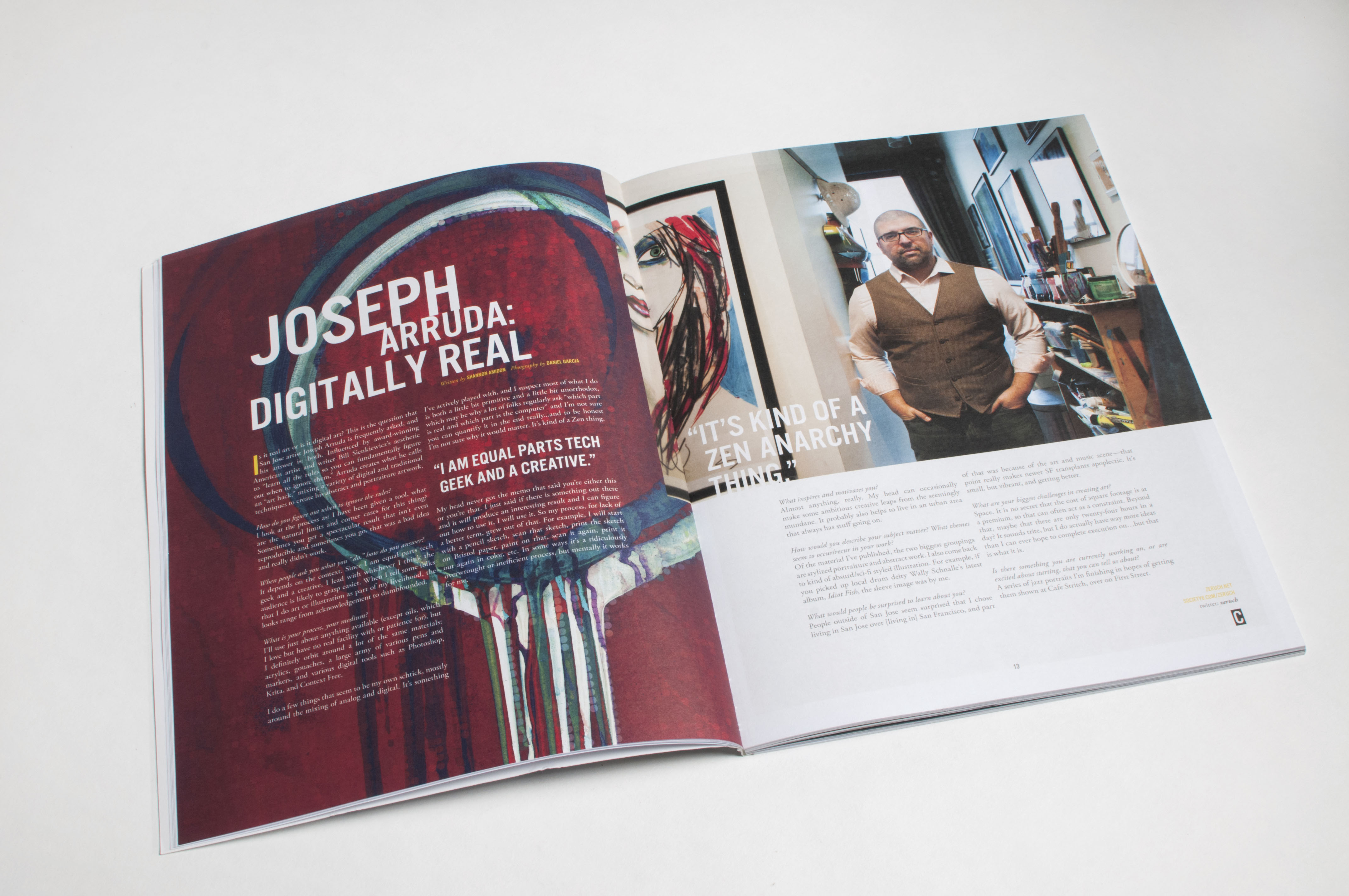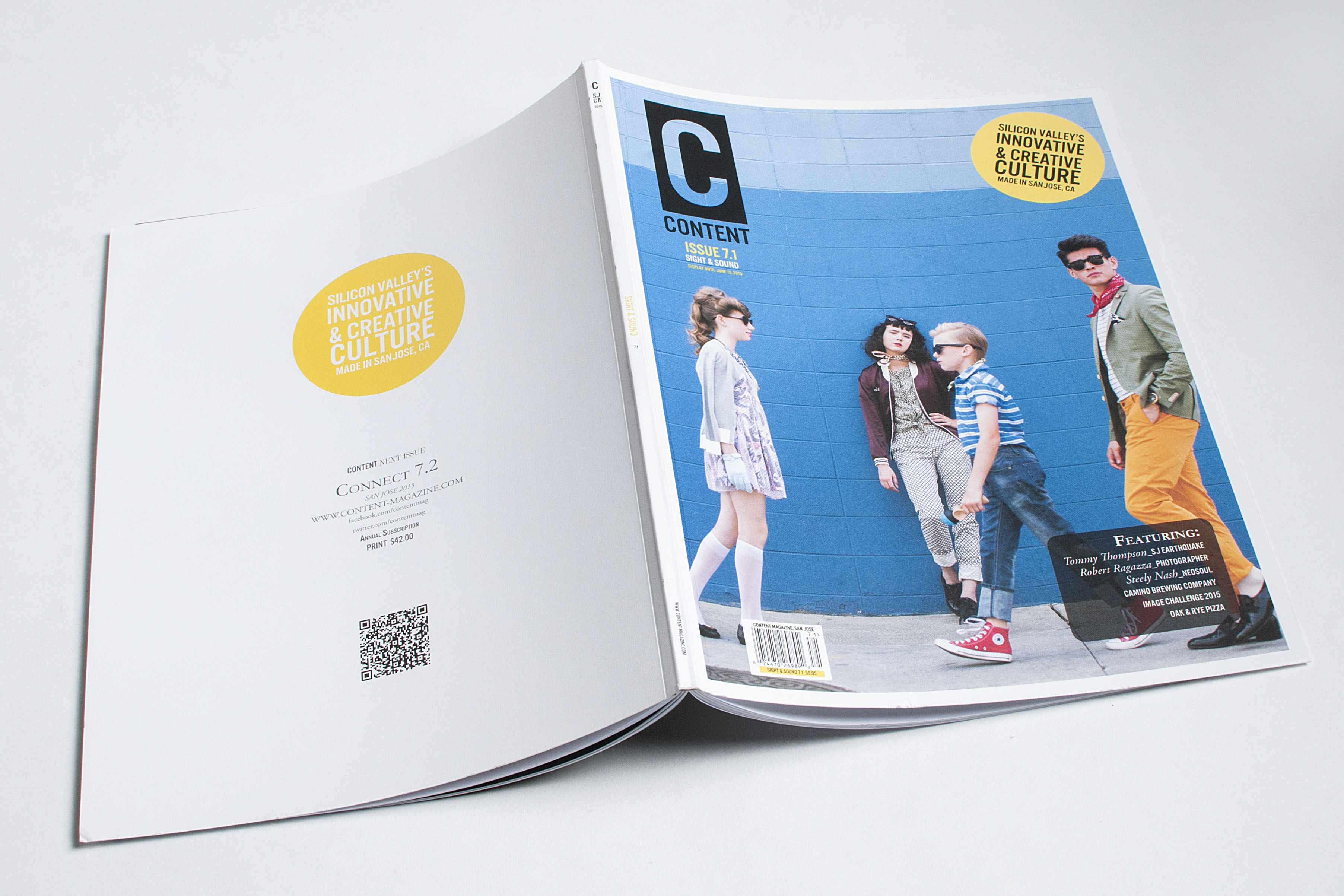
Is it real art or is it digital art? This is the question that San Jose artist Joseph Arruda is frequently asked, and his answer is: both. Influenced by award-winning American artist and writer Bill Sienkiewicz’s aesthetic to “learn all the rules so you can fundamentally figure out when to ignore them,” Arruda creates what he calls an “art hack,” mixing a variety of digital and traditional techniques to create his abstract and portraiture artwork.
How do you figure out when to ignore the rules?
I look at the process as: I have been given a tool, what are the natural limits and corner cases for this thing? Sometimes you get a spectacular result that isn’t even reproducible and sometimes you go, that was a bad idea and really didn’t work.
“It’s kind of a Zen anarchy thing.” – Joseph Arruda
When people ask you what you “do,” how do you answer?
It depends on the context. Since I am equal parts tech geek and a creative, I lead with whichever I think the audience is likely to grasp easier. When I tell some folks that I do art or illustration as part of my livelihood, the looks range from acknowledgement to dumbfounded.
What is your process, your medium?
I’ll use just about anything available (except oils, which I love but have no real facility with or patience for), but I definitely orbit around a lot of the same materials: acrylics, gouaches, a large army of various pens and markers, and various digital tools such as Photoshop, Krita, and Context Free.
I do a few things that seem to be my own schtick, mostly around the mixing of analog and digital. It’s something I’ve actively played with, and I suspect most of what I do is both a little bit primitive and a little bit unorthodox, which may be why a lot of folks regularly ask “which part is real and which part is the computer” and I’m not sure you can quantify it in the end really…and to be honest I’m not sure why it would matter. It’s kind of a Zen thing.
My head never got the memo that said you’re either this or you’re that. I just said if there is something out there and it will produce an interesting result and I can figure out how to use it, I will use it. So my process, for lack of a better term, grew out of that. For example, I will start with a pencil sketch, scan that sketch, print the sketch on Bristol paper, paint on that, scan it again, print it out again in color, etc. In some ways it’s a ridiculously overwrought or inefficient process, but mentally it works for me.
What inspires and motivates you?
Almost anything, really. My head can occasionally make some ambitious creative leaps from the seemingly mundane. It probably also helps to live in an urban area that always has stuff going on.
How would you describe your subject matter? What themes seem to occur/recur in your work?
Of the material I’ve published, the two biggest groupings are stylized portraiture and abstract work. I also come back to kind of absurd/sci-fi styled illustration. For example, if you picked up local drum deity Wally Schnalle’s latest album, Idiot Fish, the sleeve image was by me.
What would people be surprised to learn about you?
People outside of San Jose seem surprised that I chose living in San Jose over [living in] San Francisco, and part of that was because of the art and music scene—that point really makes newer SF transplants apoplectic. It’s small, but vibrant, and getting better.
What are your biggest challenges in creating art?
Space. It is no secret that the cost of square footage is at a premium, so that can often act as a constraint. Beyond that, maybe that there are only twenty-four hours in a day? It sounds trite, but I do actually have way more ideas than I can ever hope to complete execution on…but that is what it is.
Is there something you are currently working on, or are excited about starting, that you can tell us about?
A series of jazz portraits I’m finishing in hopes of getting them shown at Cafe Stritch, over on First Street.
Article originally appeared in Issue 7.1 Discover (Print SOLD OUT)

